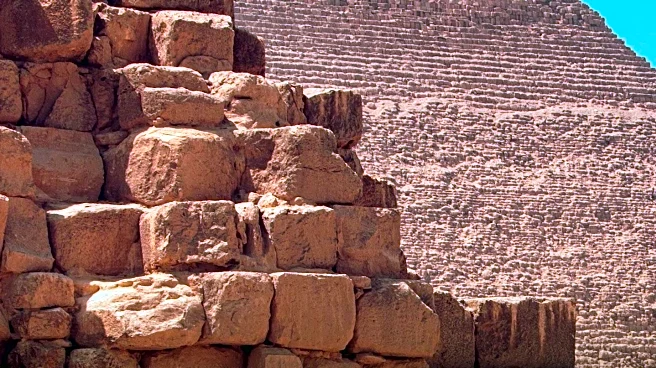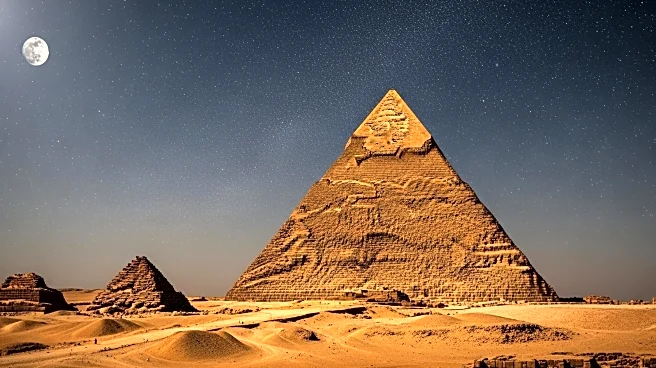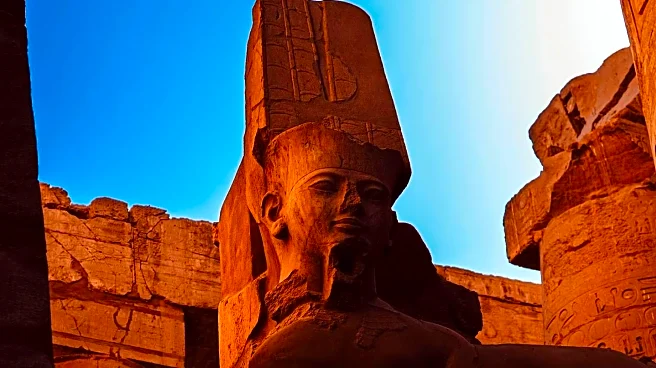What is the story about?
What's Happening?
Egypt has reopened the tomb of Amenhotep III in Luxor after more than two decades of restoration. The tomb, located in the Valley of the Kings, was discovered in 1799 and had been looted of its contents, including the sarcophagus. The restoration, led by a Japanese team, involved renovating the tomb's paintings and structural elements. The tomb features a long passageway and chambers for the king and his wives, with inscriptions from the Book of the Dead. The reopening is part of Egypt's efforts to boost tourism, coinciding with the upcoming inauguration of the Grand Egyptian Museum.
Why It's Important?
The reopening of Amenhotep III's tomb is significant for Egypt's tourism sector, which has been struggling since the 2011 political upheaval. The tomb's restoration and the upcoming opening of the Grand Egyptian Museum are expected to attract more foreign visitors, providing a much-needed boost to the economy. The tourism industry is a major source of foreign currency for Egypt, and the country's rich pharaonic heritage is a key attraction. The successful restoration of such a historically important site underscores Egypt's commitment to preserving its cultural heritage.
What's Next?
With the tomb now open to the public, Egypt anticipates an increase in tourist visits to Luxor and the Valley of the Kings. The Grand Egyptian Museum, set to open soon, is expected to further enhance Egypt's appeal as a tourist destination. The government may continue to invest in similar restoration projects to preserve and showcase its ancient history, potentially leading to more archaeological discoveries and tourism opportunities.
AI Generated Content
Do you find this article useful?














